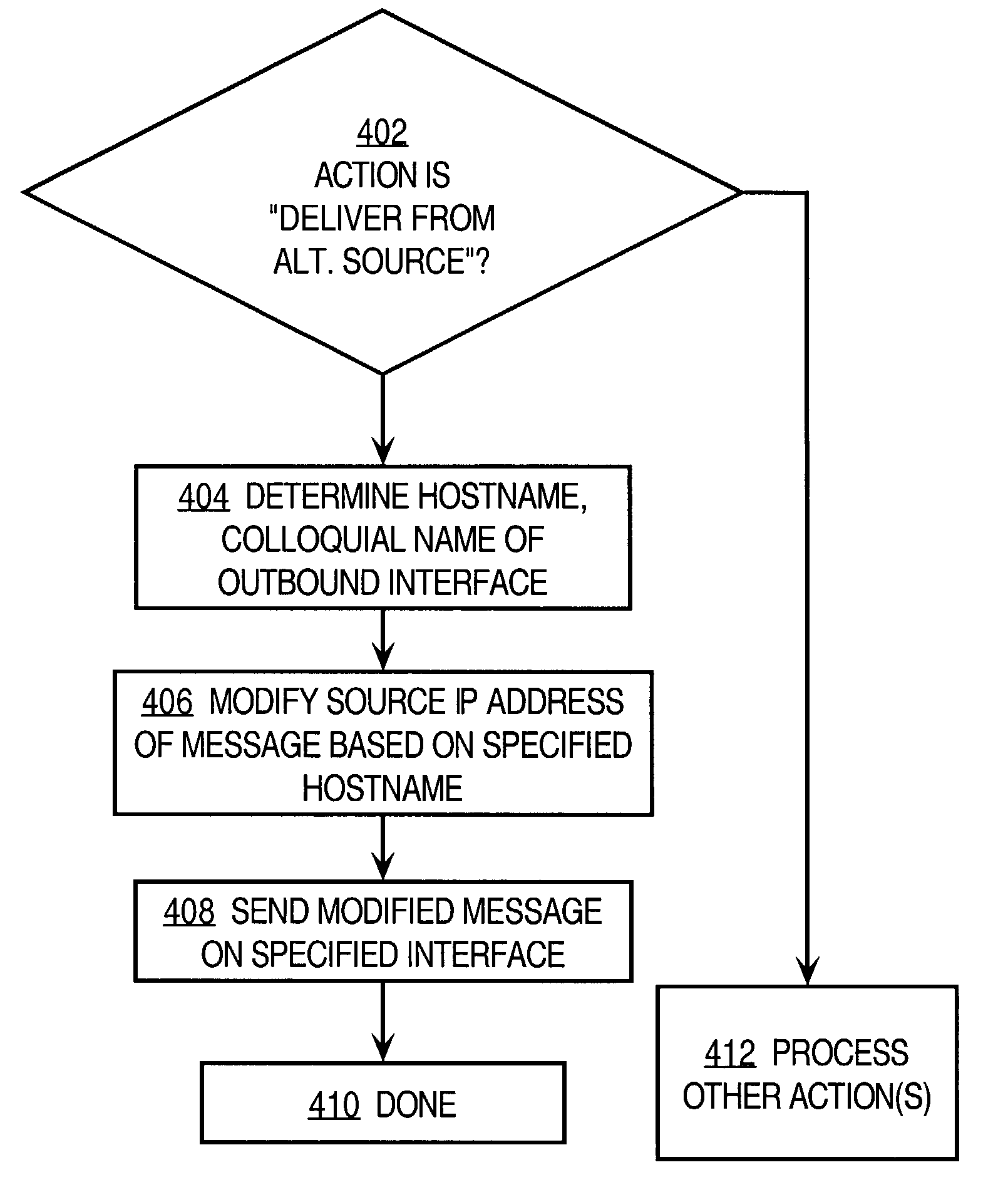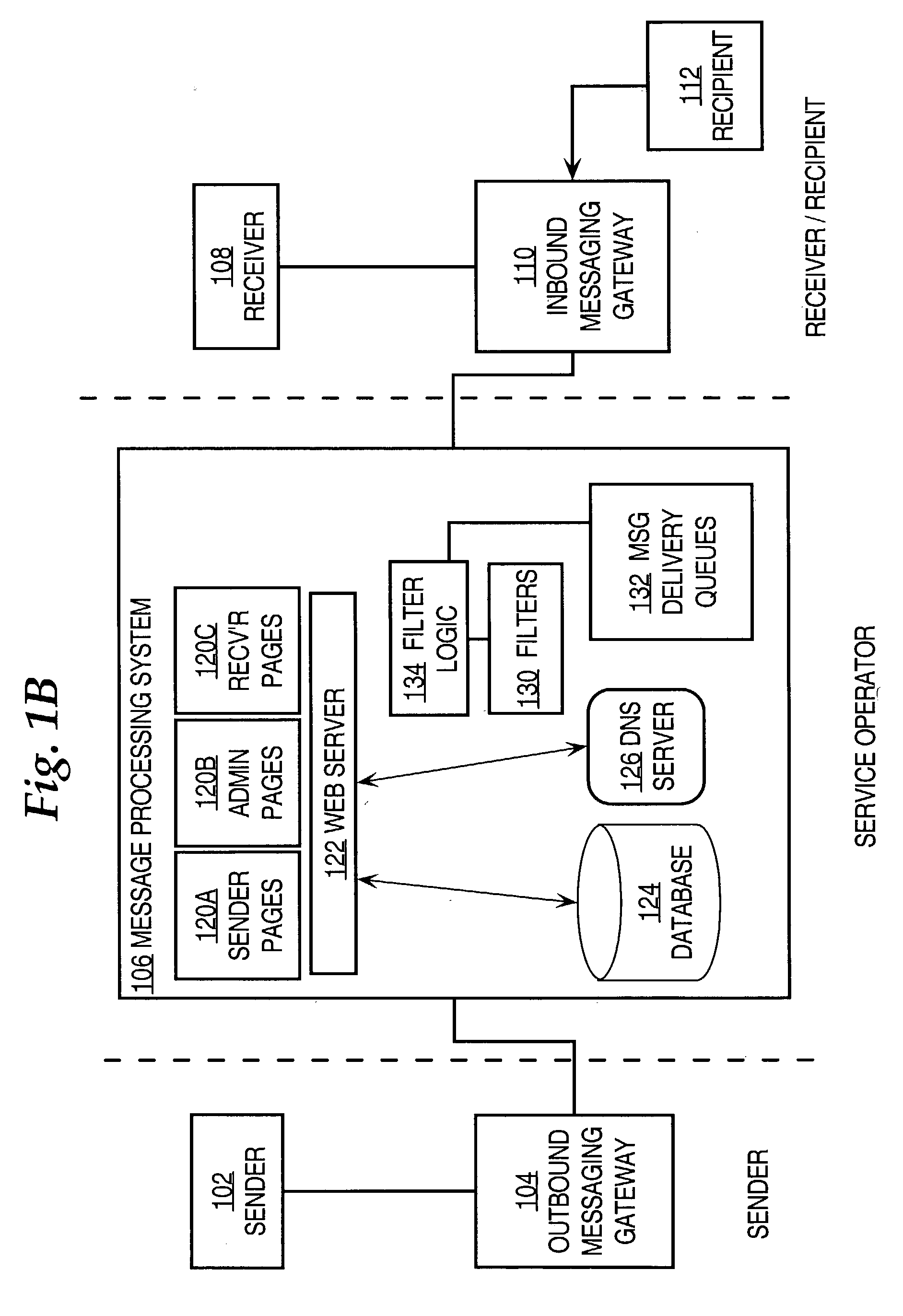Electronic message delivery using an alternate source approach
a technology of alternate source and electronic message, applied in the field of electronic message delivery, can solve the problems of many messages not being delivered, legitimate messages not reaching the intended receiver, and receivers may refuse to deliver messages
- Summary
- Abstract
- Description
- Claims
- Application Information
AI Technical Summary
Benefits of technology
Problems solved by technology
Method used
Image
Examples
Embodiment Construction
[0026]Electronic message delivery approaches are described in this application. In the following description, for the purposes of explanation, numerous specific details are set forth in order to provide a thorough understanding of the present invention. It will be apparent, however, to one skilled in the art that the present invention may be practiced without these specific details. In other instances, well-known structures and devices are shown in block diagram form in order to avoid unnecessarily obscuring the present invention.
[0027]Embodiments are described herein according to the following outline:[0028]1.0 General Overview[0029]2.0 Electronic Message Delivery Approaches[0030]2.1 Terminology[0031]2.2 System Structural and Functional Overview[0032]2.3 Overview of Message Processing Functions[0033]2.4 Message Filtering with Injection Filters[0034]3.0 Detailed Description of Message Filters[0035]3.1 Processing Rule Description[0036]3.2 Matching[0037]3.3 Header Parsing[0038]3.4 Fil...
PUM
 Login to View More
Login to View More Abstract
Description
Claims
Application Information
 Login to View More
Login to View More - R&D
- Intellectual Property
- Life Sciences
- Materials
- Tech Scout
- Unparalleled Data Quality
- Higher Quality Content
- 60% Fewer Hallucinations
Browse by: Latest US Patents, China's latest patents, Technical Efficacy Thesaurus, Application Domain, Technology Topic, Popular Technical Reports.
© 2025 PatSnap. All rights reserved.Legal|Privacy policy|Modern Slavery Act Transparency Statement|Sitemap|About US| Contact US: help@patsnap.com



